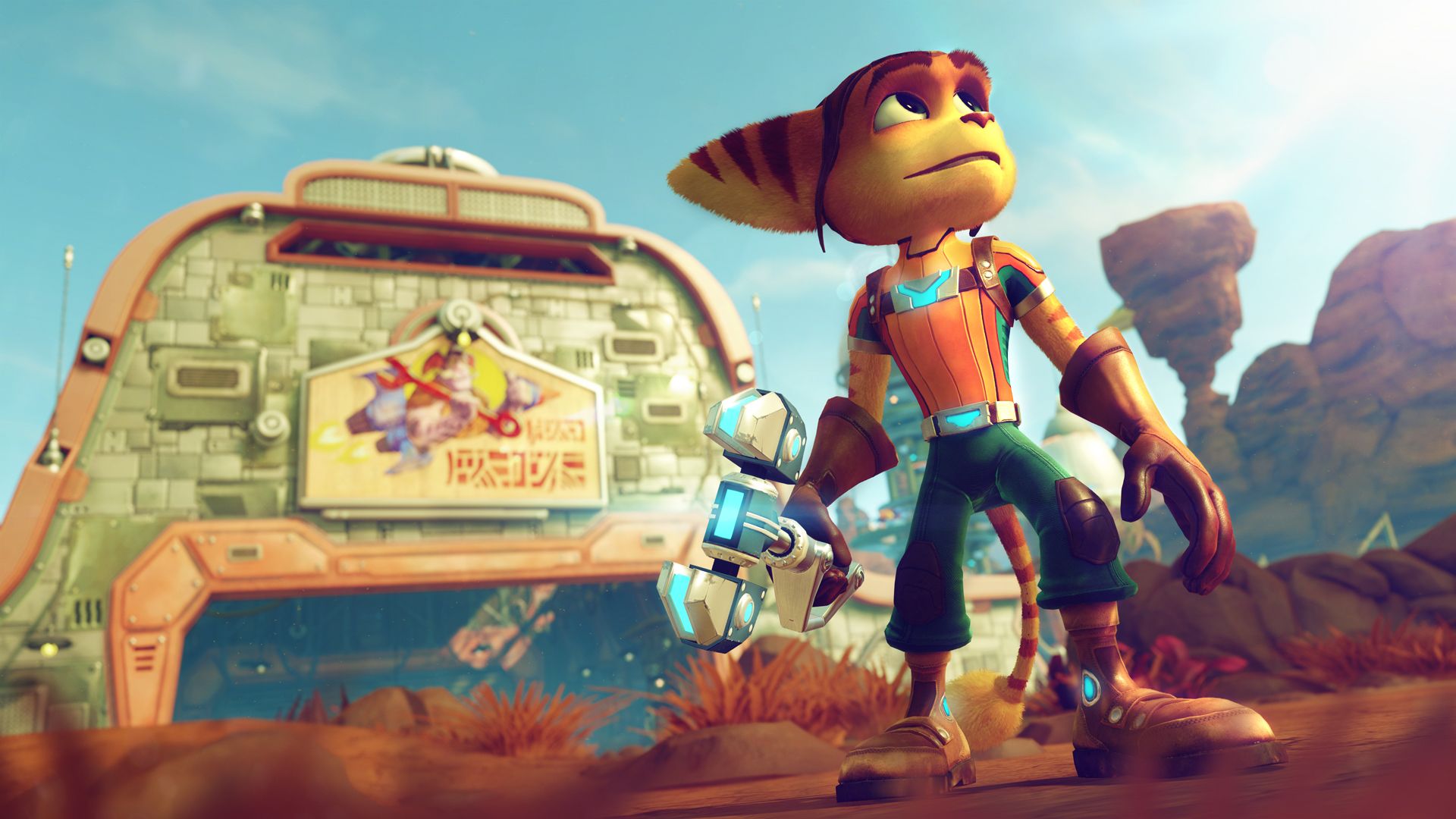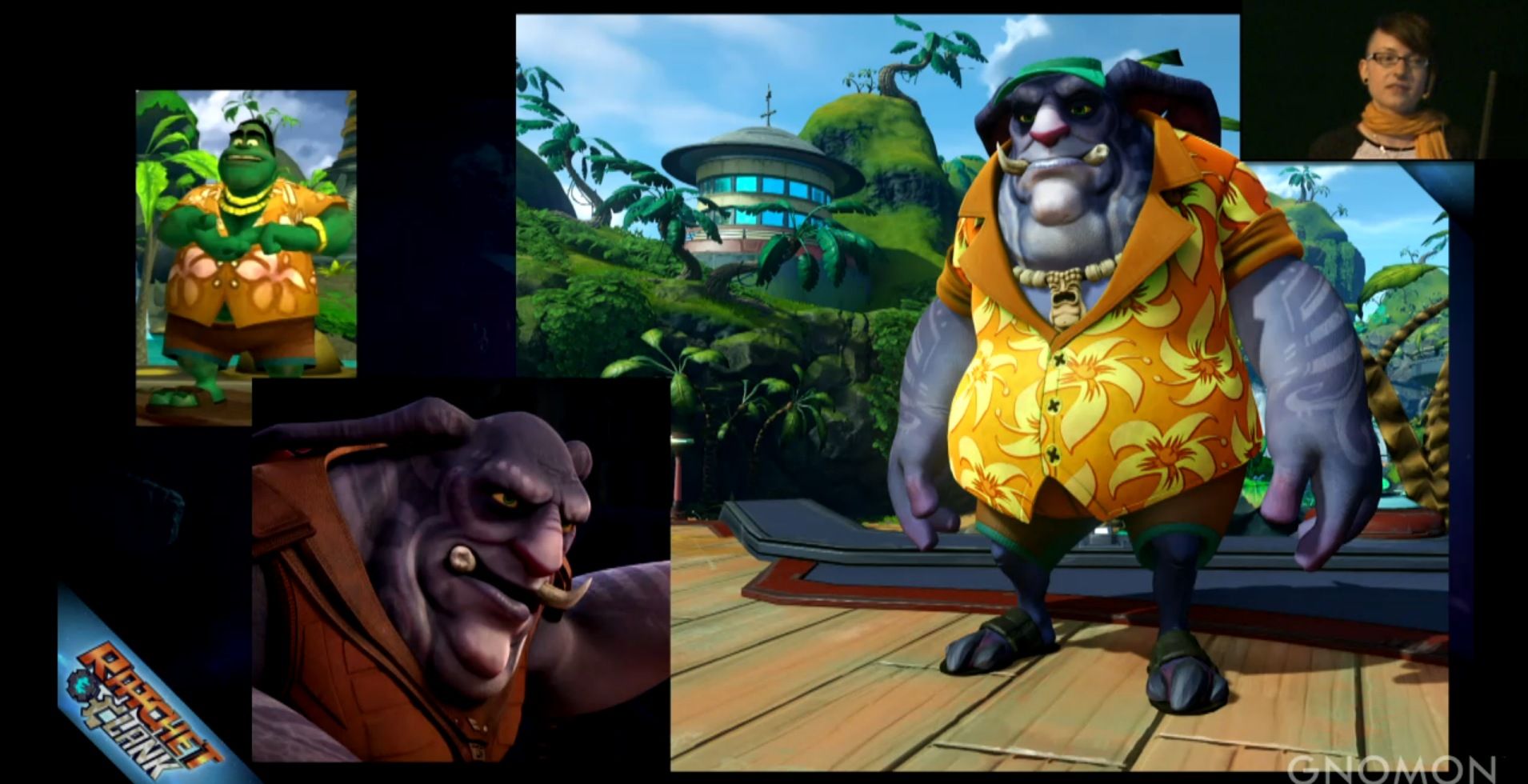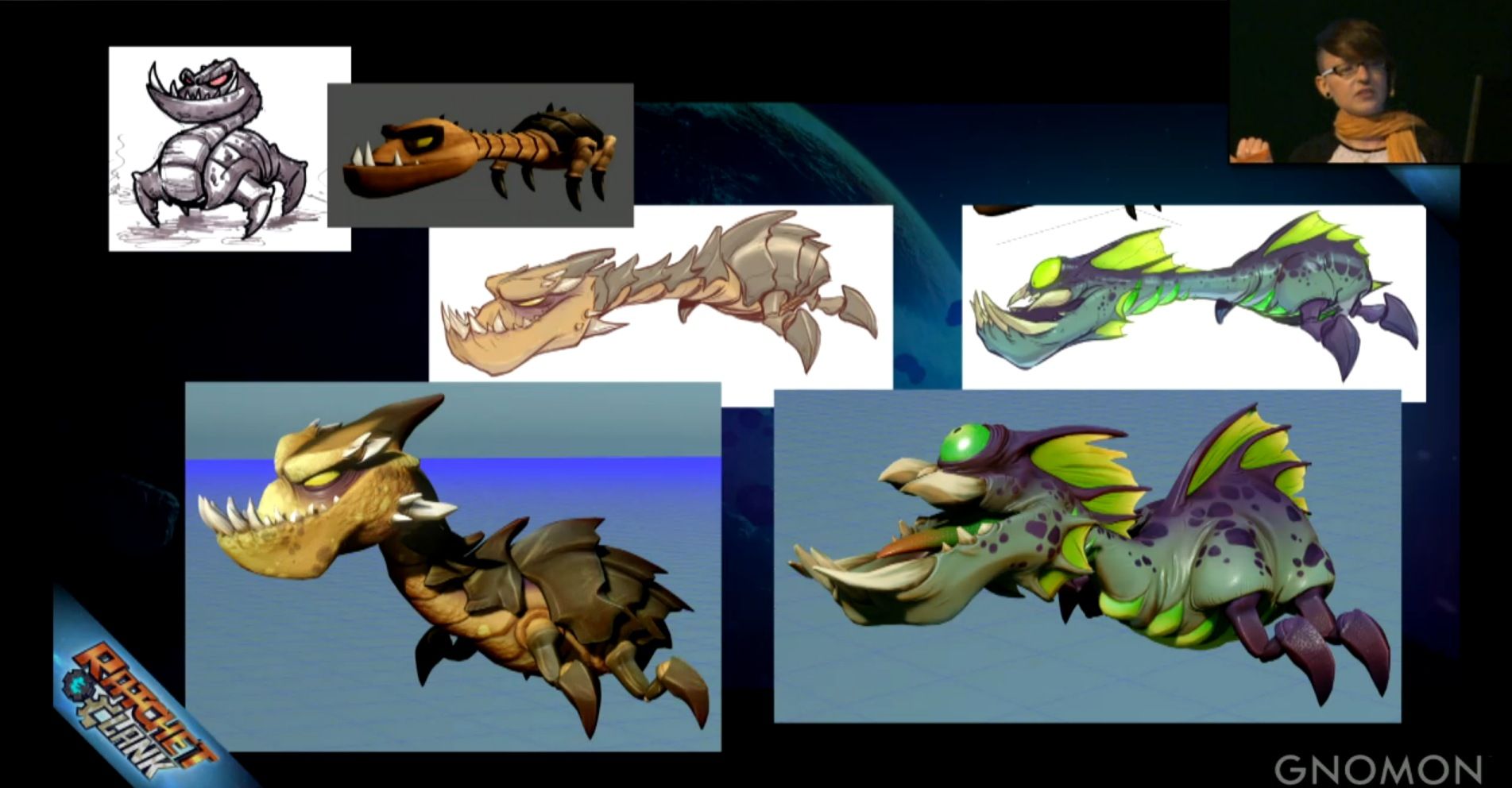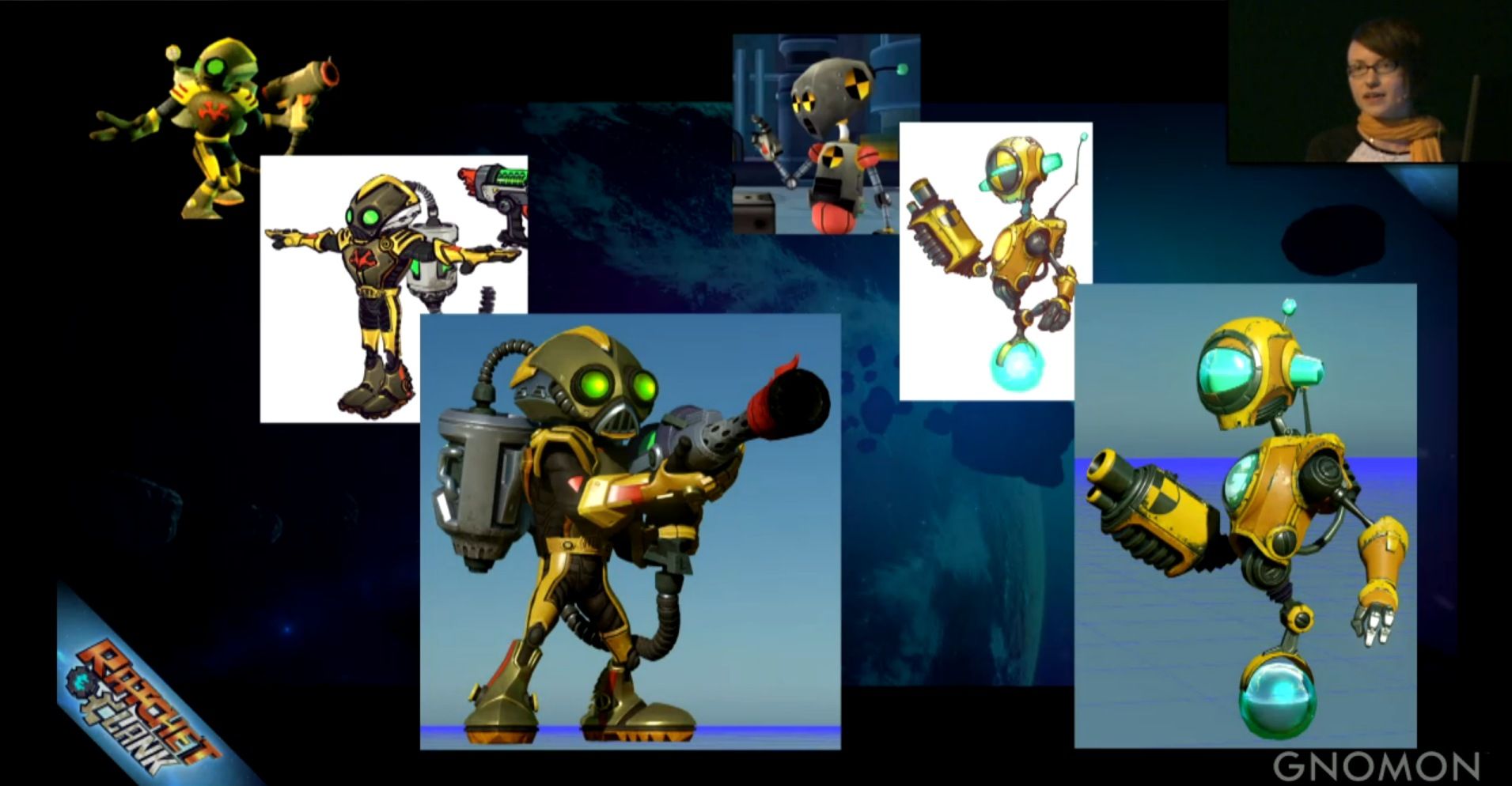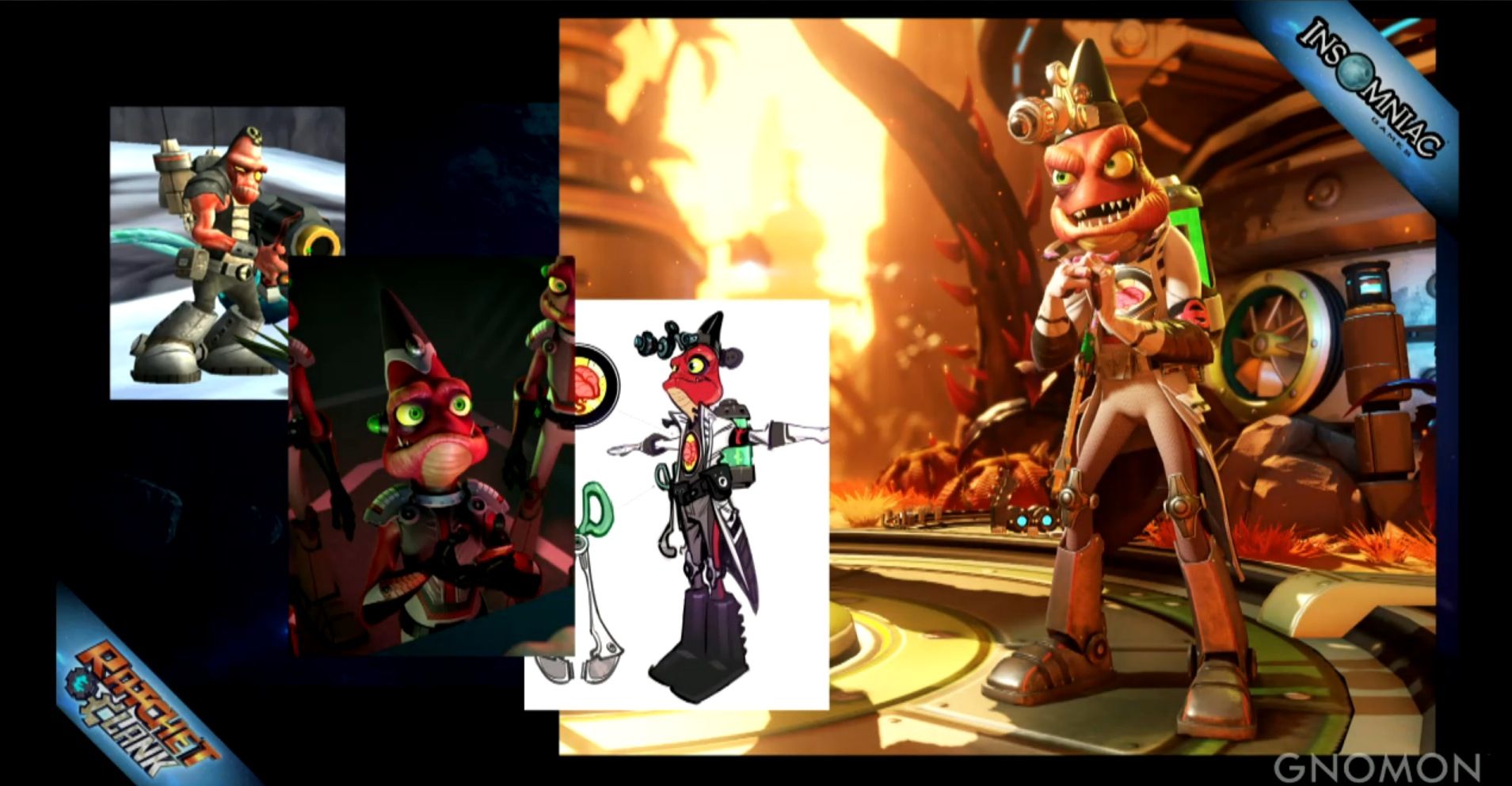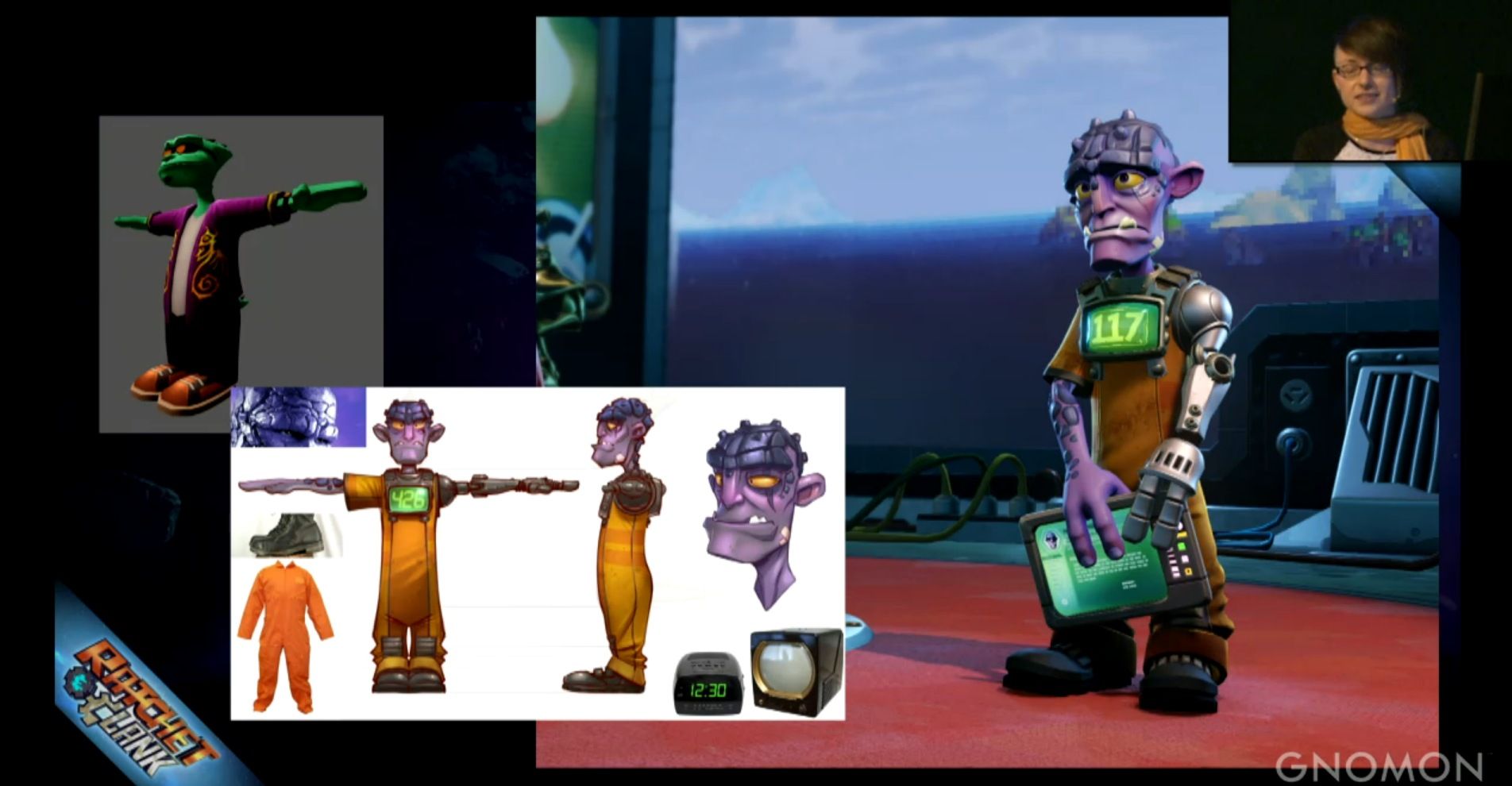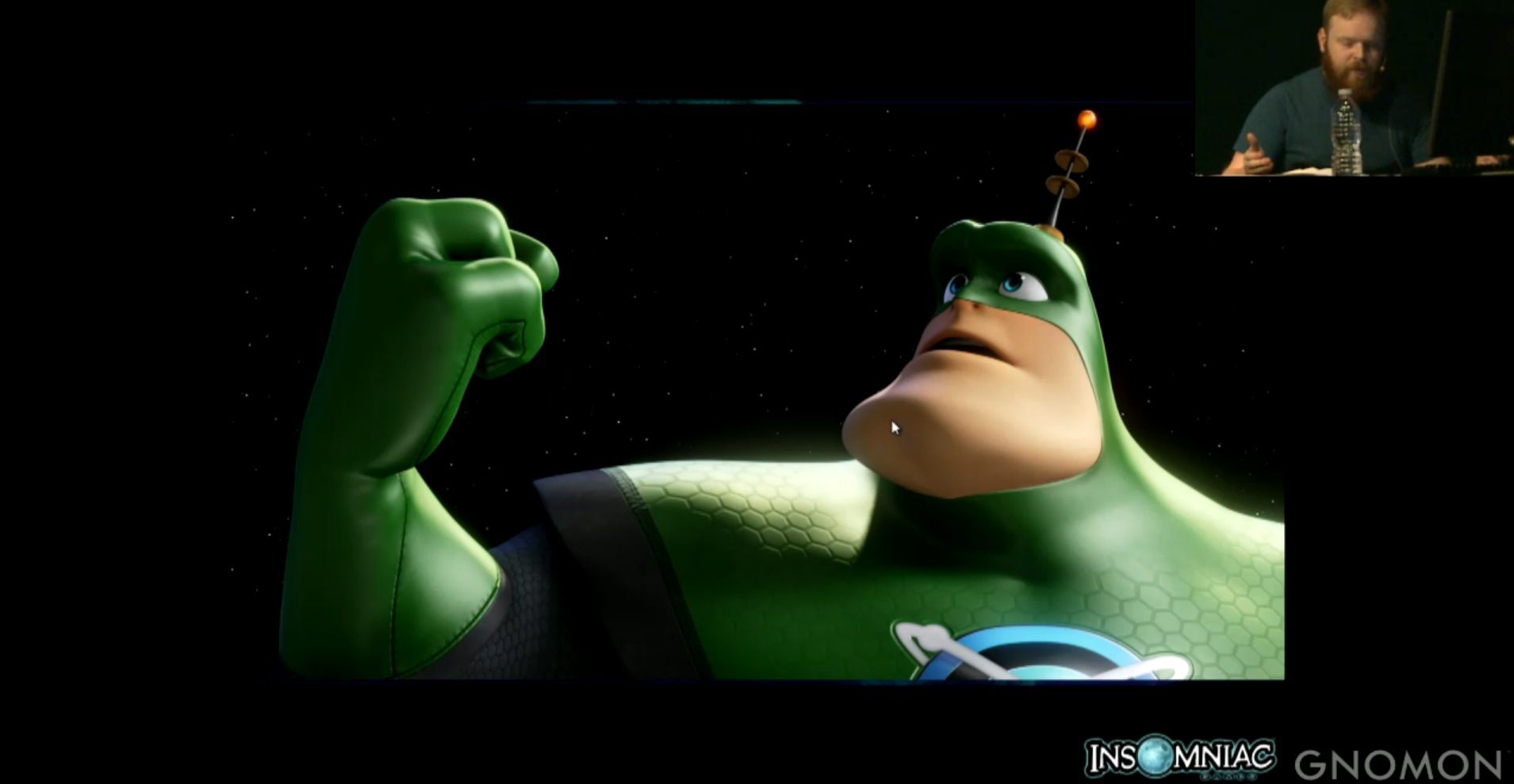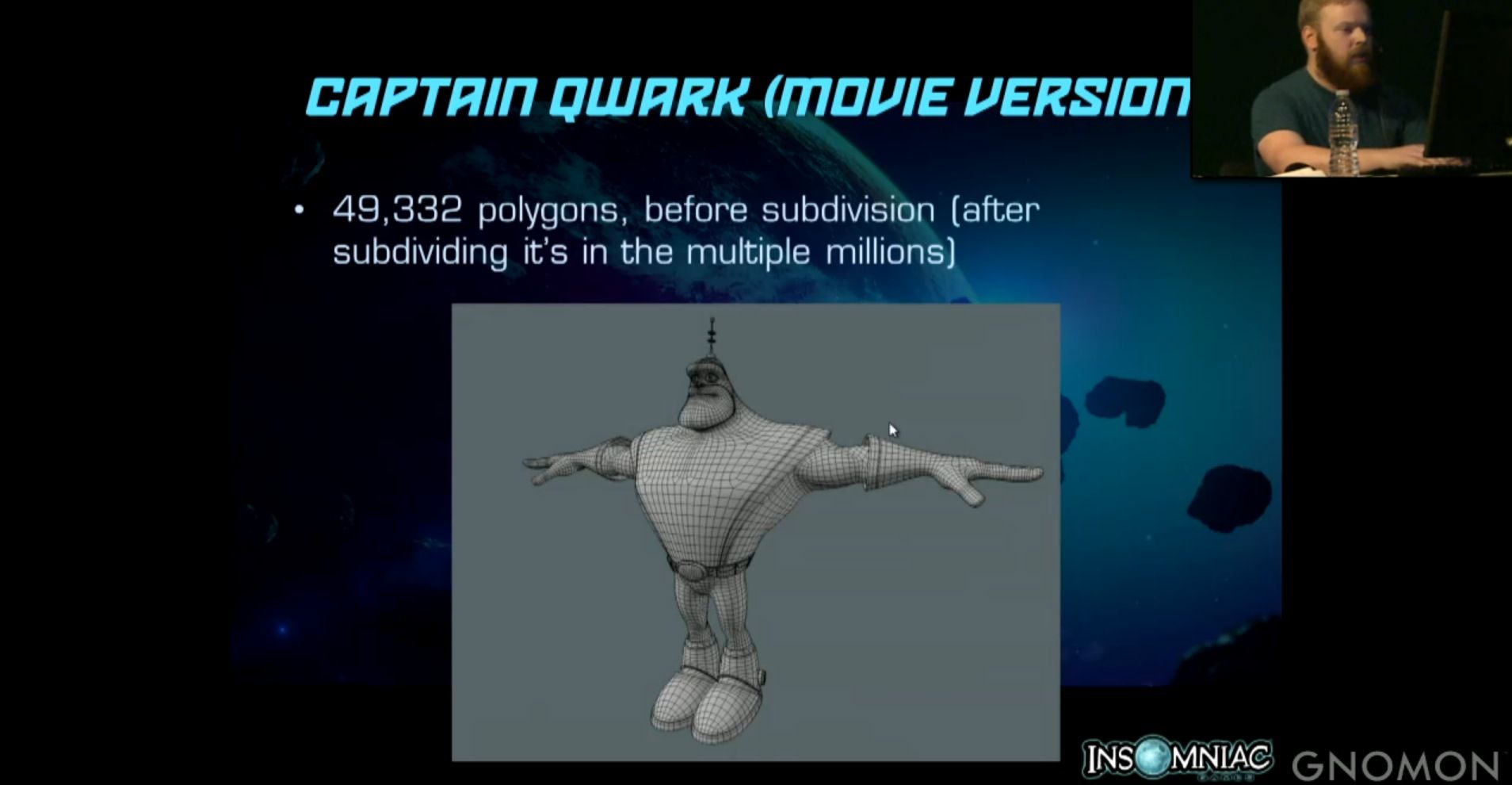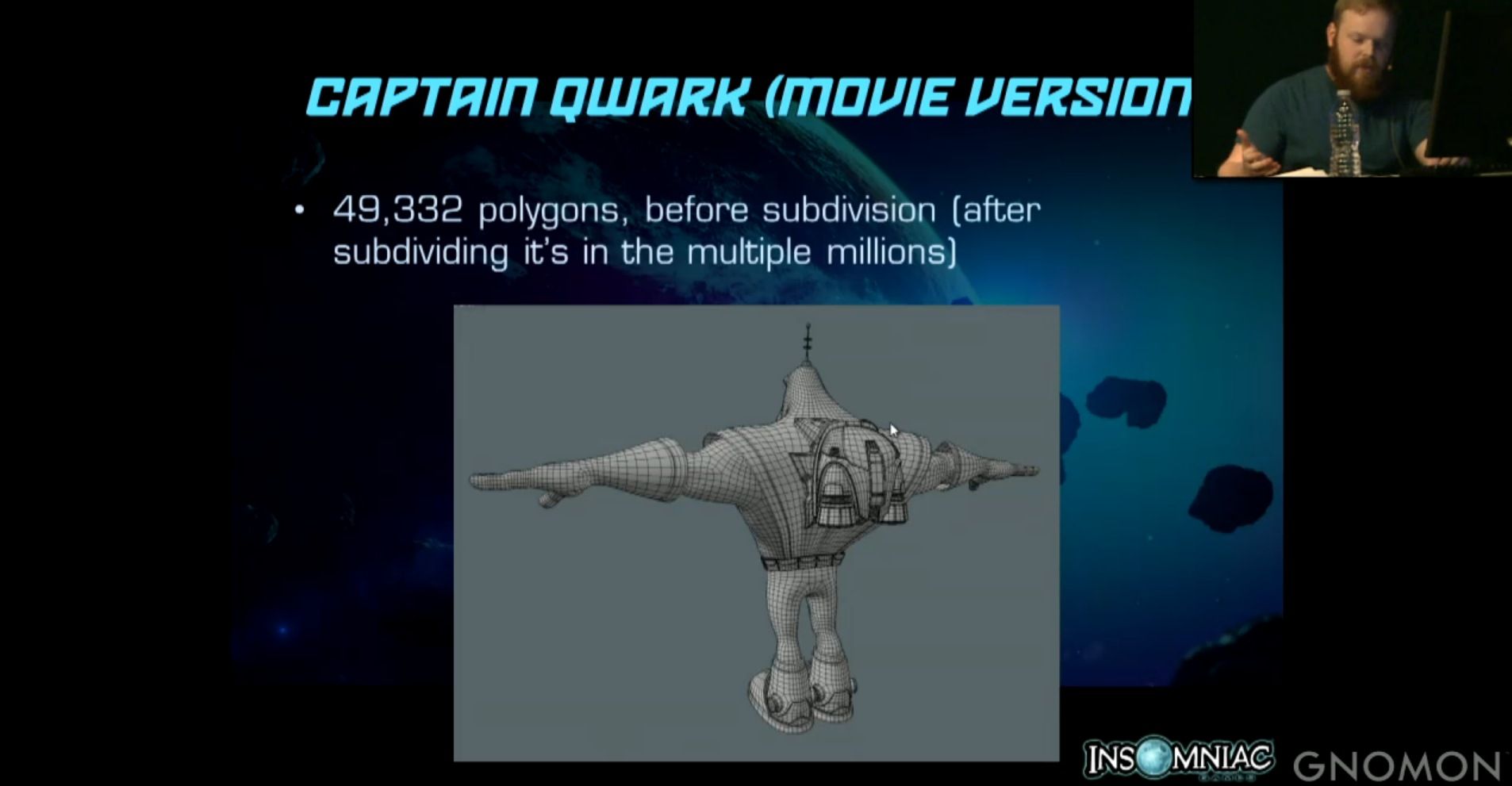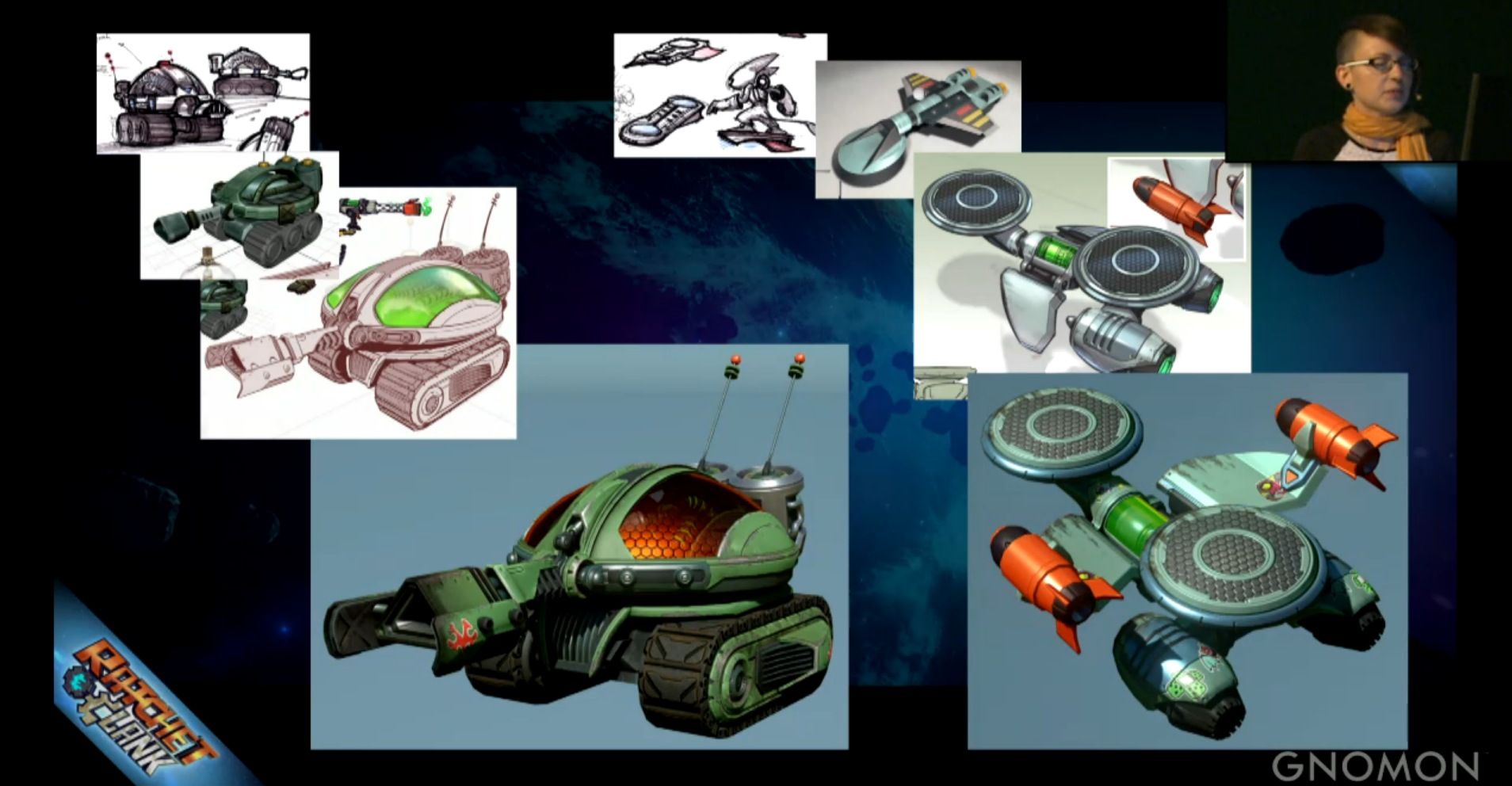During a livestreamed presentation at the Gnomon School of Visual Effects, Insomnia Games' Character Artists shared some of the impressive work they did on the upcoming PS4 exclusive Ratchet & Clank.
First of all, Character Artist Erin Zaneski talked on how the character models of the original games were updated for the new ones.
- Insomniac wanted to bring Ratchet & Clank to the current generation, pleasing the old fans but updating the game with all the latest technologies like physically based rendering (PBR).
- In-game real-time assets needed to be comparable to fil-quality visuals since the game will be released alongside an animated movie.
- Matching the game's low-polygon models to the film's high-polygon assets was a "huge concen" for Insomniac.
- The developers wanted to maintain the style and mood of the original games.
- Examples of characters and enemies from the original games updated for the new games were shown. Check them out in the gallery below.
- The character artist tried to keep the same feel and silhouettes so that old fans of the series can still instantly recognize them.
- Character artists also had to consider the fact that those models would have to support the game's exaggerated animations.
- A second version of the alien snapper was created from scratch for the new game.
- Subsurface scattering maps were created for organic-looking character models, in order to make their skin feel alive.
- Almost every character has a detailed normal map applied to it.
- Material differentiation was very important for hard surface characters like robots. Making a colored specular maps was used to define all the different materials and differentiate metals from matte materials like rubber and cloth. Different emissive glows were also used to give life to mechanical characters.
- Physically based rendering is normally realistic, but Insomniac exaggerated it to make it feel stylized.
- Felton Rezz from the original games has been updated to be the twin brother of Grimroth from the movie. The high poly-cinematic asset had to be simplified, and the textures had to be baked down to be light enough to run in real time. Yet, the character still had to match the high quality of the film asset.
- One of the minion types from the original games was updated for the movie, and the game developers gave one an extra costume to create a full-fledged speaking NPC. Lighting looks a lot like in the movie.
- Skid McMarx has been used as a template to create a whole slew on NPCs that are new to the new Ratchet & Clank game, based on his same alien species. Below you can see Shiv Helix. He has a "fun silhouette" and colors, but also a lot of material variation. A lot of variation in materials is something the artist kept in mind when making all characters.
Afterwards, Character Artist Xavier Coelho-Kostolny drew a comparison between the character models of the movie and those of the game. He also explained some errors that he made when he worked as an external contractor and were then fixed by the artists at Insomniac.
- The movie version of Captain Qwark is made by 49,332 polygons before subdivision (after rendering it becomes multiple millions). It's separated in 19 separated UV Maps chunks, 12 UV sets (basically parts of the model) including one just for his chin. He includes 25 different materials and over 70 textures mostly in 4k rsolution. The whole thing is 4 gigabytes of files.
- The game version of the character has a budget of 20,000 and 24,000 polygons. Tons of different areas had to be simplified, while others had to be completely rebuilt. All the UVs had to be completely redone, and condensed in 2 UV sets. He has two 1024 x 1024 textures sets.
- A good example of great UV Maps done for the movie are the stitches on Qwark's shoulder and the hex pattern on his arm. The stitches use a secondary UV set on top of the one that covers the entire upper body. This is handled via a shader.
- The hex pattern has no visible seams in the movie. In game models you normally hide them underneath the arms to disguise artifacts. You also put stitches on top of them to hide them further. The artists for the movies managed to create textures that tile seamlessly without showing any seam and using any trick.
- Below you can see the low-poly and high-poly models submitted by Coelho-Kostolny, the UV maps for the upper body and lower body, the color map and the gloss/specular map.
- The specular map initially submitted was "completely useless." Below you can see the initial result, that had just fairly serviceable gloss maps and absolutely useless specular maps due to miscommunication as Coelho-Kostolny was working as an external contractor at the moment. The full-time artists had to clean up the problem.
- Below you can see the fixed model with the colored specular maps added and fixed gloss maps.
- On the left, you can see the original map, and on the right the new one fixed by the artists at Insomniac.
- Below you can see the difference between the initial low-resolution eyes and the final high-resolution eyes, that use their own set of textures and materials. Irises and pupils are actually modeled.
Ratchet & Clank will release exclusively on PS4 on April 12th in North America, and on April 20th in Europe.

